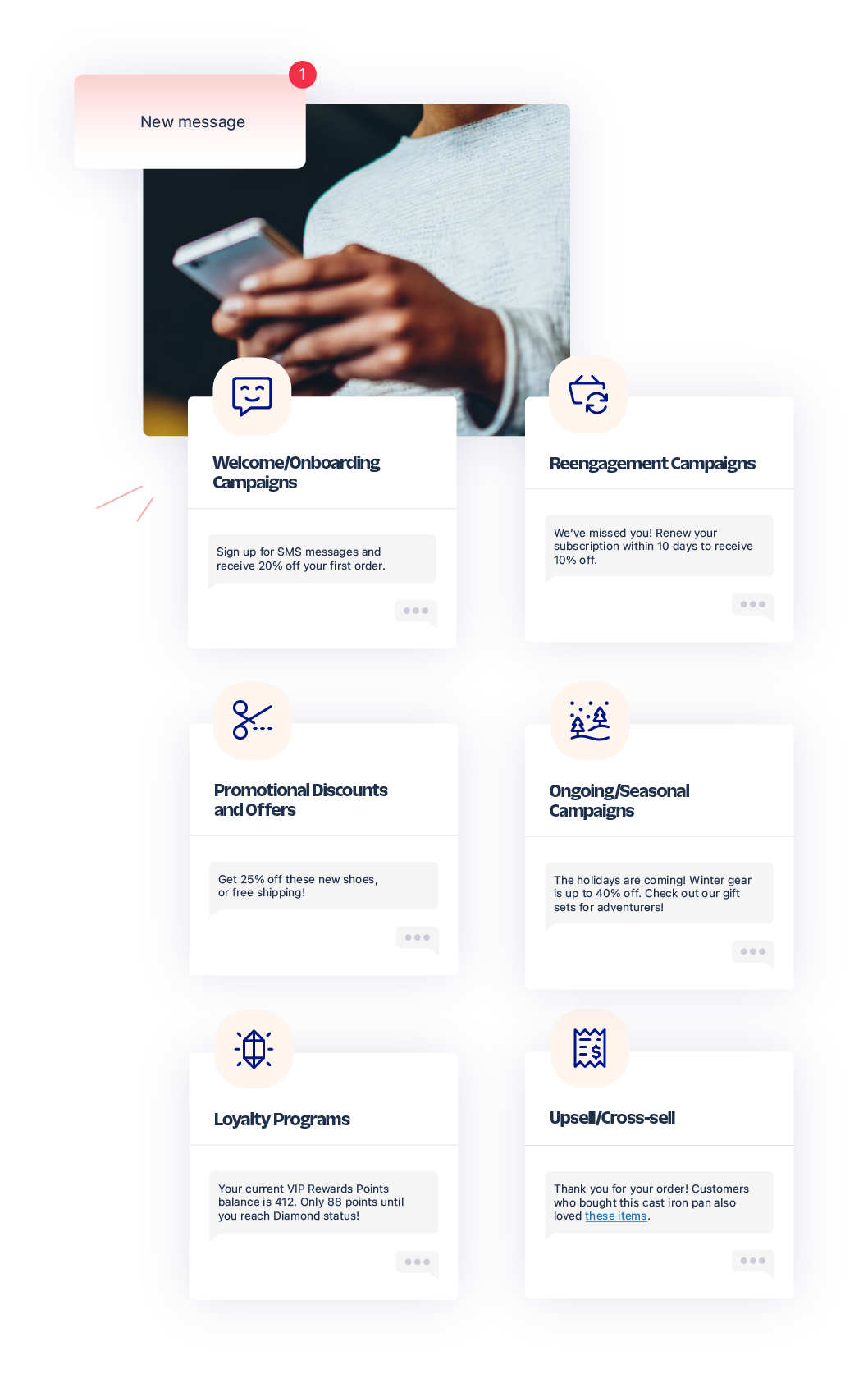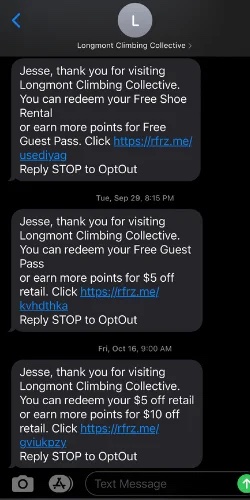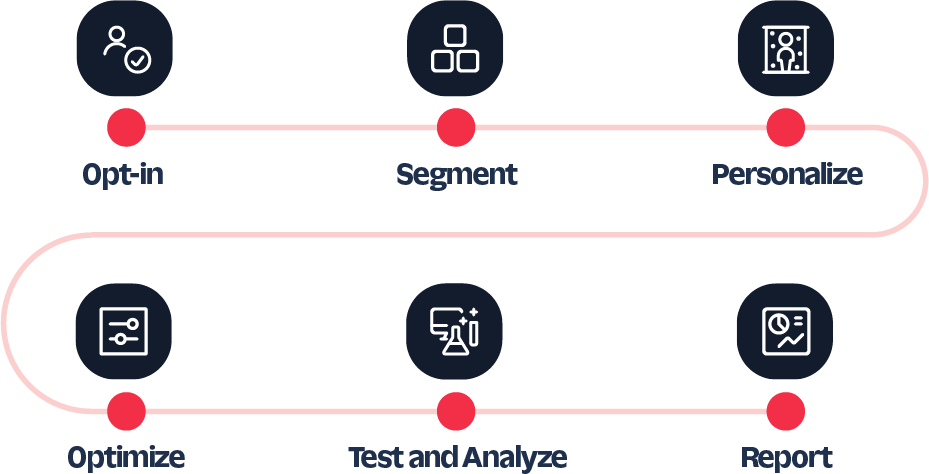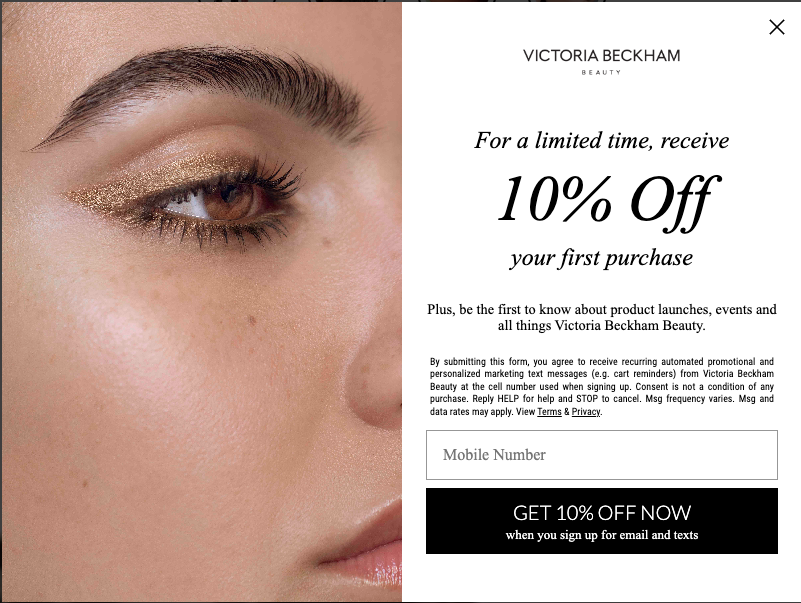SMS Marketing for Beginners: What It Is & How to Get Started

Time to read: 14 minutes
SMS Marketing for Beginners: What It Is & How to Get Started
SMS marketing is possibly the most intimate form of digital communication.
It’s a high engagement channel with a 98% open rate and industry studies show 90% of users will read their messages within three minutes of delivery.
As Paul Bonner explains, the Group CRM Director at THG that sends millions of SMS for marketing each month, "The engagement rates with SMS are really high so we know that it works really well for campaigns like short term flash sales and it’ll obviously work great on Black Friday. If I’ve got the CEO at my desk asking for a few more sales, I know that an SMS will drive that."
SMS marketing works. However, it takes a bit of know-how and application of best practices to do it right. We can help you with both (whether a small business, nonprofit, or big-time enterprise).
Below, we’ll walk you through everything you need to know about SMS marketing.
What is SMS marketing?
SMS stands for Short Message Service. Today’s world calls it texting. SMS marketing (also known as text message marketing) is the practice of using SMS messages as a powerful and direct way to reach your customers. It’s fast, has high open and response rates, and is one of the most popular ways to reach customers. Promotional messages can include updates, news, discount offers, links to new products, and more.
As an owned marketing channel, SMS should be a part of any broader digital marketing strategy. Unlike with Instagram or Twitter, you have complete control over who you send messages to, when you send messages, and what those messages contain. When you build a valuable list of opted-in SMS subscribers, you own that list—nobody can take it away. However, the same isn’t true of your Instagram or Facebook following.
With the flip of a switch, those social media networks can freeze or delete your account. A social media network also can adjust its algorithms, causing your reach and engagement to tank overnight. With owned channels like SMS marketing and email marketing, that’s not a problem for you.
SMS marketing isn’t just limited to text, either. You can take advantage of Multimedia Message Service (MMS) messages to send images, GIFs, audio files, videos, and phone contacts.
How do you use SMS marketing?
Your business can use SMS marketing in several ways to engage your customers. The tactics below focus on promotional SMS marketing, but there are transactional SMS messages to consider using too. These include:
- Welcome messages
- Account alerts
- Order confirmations
- Shipping notifications
- Booking reminders
- One-time passwords
- Appointment reminders
Promotional text message campaign examples
But back to using SMS for marketing. Here are a few types of campaigns to try:
- Welcome/onboarding campaigns: Welcome subscribers to your list and collect valuable user data (like interests or messaging preferences) to build audience segments.
- Promotional discounts and offers: Increase sales by delivering personalized messages that appeal to an individual customer (like free shipping, a free gift with an order, or a custom coupon).
- Reengagement campaigns: Keep your brand top of mind through SMS messages about price drops, abandoned carts, product recommendations based on previous behavior, and more.
- Loyalty programs: Retain customers and increase their spend by offering perks like exclusive sale access, sneak previews, status rewards, and event invites.
- Ongoing/seasonal campaigns: Drive customers toward conversions with offers related to Black Friday, back-to-school events, and other holidays.
- Upsell/cross-sell: Drive customers toward additional purchases based on previous behavior. For example, send a friendly marketing message to customers who spent more than a certain dollar amount but haven’t visited your site in the last 30 days.
- Announcements: Give your customers a heads-up that you’re moving locations or changing store hours with an SMS announcement.
- Events: Text your recipients about upcoming local events or webinars to boost sign-ups and attendance.
- Product launch: Tell your customers about your newest products to increase awareness and drive launch sales.
- Services: Offer product support via text messages to help new or distressed customers.

Let’s take a look at an example of a loyalty program campaign in action. Rock climbing gym Longmont Climbing Collective used SMS marketing to remind climbers about their accrued points from visiting the club. These messages updated members with point totals and reminders about what they could redeem points for, building customer loyalty and engagement.

How do you set up SMS marketing messages?
SMS is powerful, but it comes with unique constraints. Because it’s so personal, customers have a lower tolerance for unwanted messaging and over-communication. So to maximize the effectiveness and benefits of SMS, you’ll need to be intentional about how you integrate SMS into your overall marketing strategy. Let’s look at 5 steps to creating an effective SMS strategy.
1. Build a list of opt-in subscribers
Before sending customers SMS, you must get the recipient’s explicit consent. Simplify this process by offering your customer something of value in return for their consent. This could be in the form of trust (e.g., receipts, delivery updates, order notifications, etc.) or promotions and discounts (e.g., 10% off their purchase for new SMS subscribers).
Other ways to gain subscribers include using QR codes, “text this number” displays, and social media messaging.
2. Develop a strategy for the entire customer journey
Next, develop a communication strategy for every phase of the customer journey. Here’s where SMS can play a meaningful role throughout the customer lifecycle. For example:
- Awareness stage: Invite customers to opt in to receive SMS offers
- Consideration stage: Send customers promo codes, limited-time offers, or abandoned cart messages
- Conversion stage: Send customers product delivery updates
- Loyalty stage: Offer customers value-added services, support, and loyalty program incentives
- Advocacy stage: Ask for customer referrals and product reviews
3. Personalize your content
Every marketer knows the key to success lies in your ability to share the right message, at the right time, with the right person. Luckily, you can do just that with SMS personalization.
SMS personalization is unique compared to other channels due to the intimacy of this channel and its limited character counts. Still, there are many ways businesses can leverage SMS personalization to engage customers. For example, you can send customized messages using first-party data, like a customer’s:
- First name
- Interests
- Birthday
- On-site or in-app behavior
- Gender
- Age
- Purchase history
We’ll discuss this topic in more detail in the “What is SMS personalization?” section below.
4. Optimize your campaigns
There are 2 elements of your campaigns you can optimize: delivery and messaging.
The key to optimizing delivery is partnering with the right provider to benefit from uptime, carrier relations, redundancy, and more. Your ideal provider will also offer guidance on how to reduce filtering (e.g., when a carrier blocks messages because the content is illegal, inappropriate, or considered spam).
For message optimization, you can rely on A/B testing to compare different copy, visuals, offers, and more to determine what messages resonate most with your audience. For example, you can test the words “discount” versus “coupon” in your message copy to see which drives more conversions.
5. Measure and report
After sending your SMS campaign, monitor the effectiveness of your program to demonstrate return on investment (ROI) and adjust campaigns as needed. Metrics to track include subscribers, opt-outs, sends, replies, deliverability, click-through rate (CTR), revenue, conversions, and more.
What are the benefits of using SMS marketing?
While there are plenty of channels you can use for your marketing efforts, there are a few key advantages of SMS marketing:
- Cost-effective: SMS allows you to send a text message as a relatively inexpensive form of advertising, especially when compared to paid ads or sponsored posts.
- ROI Impact: SMS helps businesses realize ROI.
- Time-sensitive: SMS recipients tend to open messages in less than a few minutes, letting you engage with your audience in real time.
- Automation: SMS texts let your marketing program run on autopilot when scheduled in advance.
- Relationships: SMS allows you to engage in conversations with customers, which helps build relationships—95% of consumers trust brands that make it easy to initiate a conversation.
What are the challenges of SMS?
Now, let’s look at some of the challenges with SMS to help you avoid common pitfalls and decide which messages are appropriate for this channel:
- You need a direct opt-in from the customer. Unwanted SMS messages are ineffective, prohibited by providers, and, in many cases, illegal. That means each individual must actively opt in to receive promotional SMS messages from your brand. SMS guidelines vary by country, so familiarize yourself with the relevant regulations before texting customers.
- You need to adhere to message length and design limitations. Basic SMS messages can have up to 160 characters (or fewer, if you include special characters like emojis), so providers will send longer texts as multiple messages (although they'll typically arrive and appear as a single message).
- You only have room for one message and one call to action (CTA). Your content must be concise to make the most out of this marketing channel. So for longer, less timely messages, consider using email marketing.
- You need to know that timing is crucial. People tend to check text messages immediately, so consider time zones to avoid sending messages in the middle of the night.
What are SMS marketing best practices?
While getting started with mobile marketing is easy, we don’t recommend rushing into it without a well-thought-out SMS marketing strategy.
People tend to treasure their phone numbers more so than their email addresses—and for a good reason. It’s easy to create multiple email addresses for different purposes: work, family, promotions, hobbies, and the like. And while getting a second phone number isn’t difficult, not many people do it.
Improve your subscribers’ experience and your bottom line by following these SMS marketing best practices.
Get permission first
Only send SMS texts to customers who give you permission. Finding a number online or in a phone book doesn’t give you a license to send messages to it. Get permission first.
SMS marketing, like email marketing, is a form of permission-based marketing. Users opt in to these communications. They don’t get to choose what TV or Instagram ads they see, but they do get to choose which emails and texts they receive on their mobile phones.
You can gather permission from subscribers by asking them to fill out a form or text a keyword (like “join” or “subscribe”) to a phone number or short code. When they subscribe, send a follow-up text confirming their interest. This is a form of double opt-in to ensure they meant to subscribe to your SMS marketing messages.
Provide an opt-out always
Give your SMS subscribers a way to stop receiving your messages. For example, you might include in your first message that they can text “stop” to opt out of further marketing communications.
You want to give your customer an easy way to unsubscribe from your messages. If they can’t figure it out quickly, they may just block your number instead—and that could prevent you from ever messaging them again (even with important information). Also, if carriers see large amounts of your texts marked as spam, they may stop delivering your messages.
Introduce your brand
When you message someone (especially for the first time), you want to make it crystal clear who you are. You don’t want to send a generic “Thanks for subscribing” message. The recipient might have forgotten that they subscribed to your messages.
We recommend branding all your texts with something that’ll make it clear who you are. That could be as simple as signing off with your brand’s name or including your tagline in the text.
Additionally, when introducing yourself to new subscribers, provide them with expectations. For example, let them know what kind of content they can anticipate.
Nail your timing
Be considerate of your recipient’s time zone. You don’t want to send them text messages at 5 a.m. or 10 p.m. Remember, people check their phones for new messages almost immediately—it’s a little bit different than email, which consumers tend to check periodically throughout the day.
Also, consider the content of the message. Does someone really need to know about your upcoming product launch when it’s 2 p.m. on a Sunday? Probably not. Instead, think about sending that text message during regular business hours during the workweek.
Keep messages short and sweet
Text messages should be quick and concise. If you can’t squeeze your message into 160 characters or less, maybe you should send an email instead.
Focus on a single CTA. Give your target audience one key piece of information and one exact thing to do with it, whether a special offer or free shipping discount.
While most modern phones and networks support message concatenation (splitting large messages into smaller SMS segments, then recreating the entire message at the receiving end), you have to pay for each segment. For example, if you send a message with 180 characters, it’s going to cost you the price of 2 text messages.
Learn more about SMS character limits.
Tell customers how often you'll contact them
It's vital to set expectations for the frequency of your SMS marketing communication. The goal is to garner trust from your subscribers so they get excited about the value you offer and don't unsubscribe.
At sign-up, tell subscribers how many messages they may receive every month, such as "never more than 6 per month." Next, test and optimize your message frequency to determine what works best for your business and customers. After all, what works for one industry or company may not work for another.
What is SMS personalization?
Delivering customized messages and offers to your users on their preferred channel is essential to a successful campaign. In fact, according to Twilio’s State of Customer Engagement Report 2022, businesses (98%) and consumers (83%) agree that personalization increases brand loyalty.
So how do you build this personalization into your SMS marketing strategy? Here are some tactics:
- Segment your users into meaningful audiences. Audience segments help ensure you only send customers relevant messages. For example, customers who signed up for coupons and have purchased running shoes in the past are likely interested in coupons for treadmills. A customer data platform (CDP) like Twilio Segment can help you capture data from website and mobile audiences, which you can use to build hyper-targeted segments to power your SMS campaigns.
- Use personalized templates in your communications. Templates with dynamic tags like {{ FirstName }} or {{ AppointmentData }} allow you to customize your messages to each recipient.
- Communicate with customers via their preferred channel. A CDP can help your business gather, organize, and act on customer preferences. So if they prefer SMS for coupons and email for updates, adhere to this information.
- Leverage your customer data. Twilio Engage makes it easy to tie together the data from your CDP, your communication channels, and your campaign analytics to build effective campaigns based on customer demographics, interests, browsing data, and more. Your business has a wealth of information on your customers, so put it to good use.
Personalization in practice: How to build a great campaign
What does SMS personalization look like in practice? Here’s an example of the process of building an effective SMS campaign:

1. Opt-in: Your business launches an on-site pop-up (like the below example from Victoria Beckham Beauty) prompting visitors to opt in to your SMS messages to receive updates on new products, item restocks, sales, and more. A double opt-in process allows you to get recipients’ permission to send them promotions.

2. Segment: Your business runs an exclusive in-store sale, so instead of sending every recipient the same message, you experiment with audience segmentation to ensure texts are relevant and meaningful to each recipient. For example, you send an SMS to customers who live within 20 miles of a brick-and-mortar location. You create the following copy:
[Business name]: Don't miss the BIGGEST sale of the year!
Shop in-store & save up to 50%.
Find a store near you: https://abcde.io/12345
3. Personalize: Your copy looks good—it’s short, to the point, and has a clear CTA. And yet, you want to personalize the message, so you add the recipient’s name:
[Business name]: Don't miss the BIGGEST sale of the year, {{firstname}}!
Shop in-store & save up to 50%.
Find a store near you: https://abcde.io/12345
4. Optimize: You optimize your campaign for deliverability, including content and regulations, before you hit Send:
[Business name]: Don't miss the BIGGEST sale of the year, {{firstname}}!
Shop in-store & save up to 50%.
Find a store near you: https://abcde.io/12345
Txt STOP to opt out.
5. Test and analyze: You A/B test the SMS message you drafted against an MMS message with an image to see which drives more engagement. The SMS performs better, so you send that message to the rest of the segment.
6. Report: You track and measure metrics like CTR to report on the ROI of your campaign after you hit Send. Then, you apply these insights into what worked and what could use some work to set your next SMS campaign up for success.
How do you start sending SMS marketing messages?
Ready to get started with SMS marketing? First, you’ll need to decide whether to build or buy a messaging solution depending on your team resources, scalability needs, budget, and other factors. But once you’ve decided on your SMS provider, it’s simple to start sending.
Here’s how to get up and running with Twilio’s SMS marketing platform.
1. Set up a Twilio account
Sign up for a free Twilio account. You’ll receive free credits to get started.
Next, follow along with this tutorial—it’ll show you how to start sending SMS messages in less than 5 minutes.
It’s that simple.
Plus, it’s scalable. If you want to send 10, 100, 1,000, or 10,000 text messages, you’ll be on a platform that’s ready to support you. Give it a try and see what you think.
2. Build an opted-in list
Begin building your list of subscribers. You could try adding a form to your website or trading valuable content for your customers’ phone numbers.
Building a list takes time and patience. So don’t get discouraged and rush off and buy an SMS marketing list—that’s a big no-no. Provide value, and the subscribers will come.
3. Choose a phone number type
Choose a phone number type for your business. But remember, the type of phone number you use for your business SMS will impact costs, message throughput (how many messages you can send per second), your ability to initiate 2-way communications, and which regulatory guidelines you need to follow.
The phone number types for businesses in the US are:
- Toll-free
- High-throughput toll-free
- A2P 10DLC
- Short code
Read more about how to choose the right phone number type for your business needs.
4. Experiment with Twilio Studio
Remember that marketing messaging isn’t a one-way street. You want to be available for (and encourage) a bit of back-and-forth with customers.
For example, when you send a discount code to your recipients, you want them to be able to ask, “Can I use this on your clearance items too?”
That’s where Twilio Studio comes in handy.
Twilio Studio is our drag-and-drop visual communications builder. You can build intelligent chatbots, automated attendants, and autoresponders to create personal conversations with your recipients.
What are some SMS marketing examples?
Not sure what a proper SMS marketing campaign looks like? We have a few SMS text marketing examples and case studies to give you a taste.
- Game of Thrones builds hype: HBO used the power of SMS and sent personalized text messages teasing out upcoming episodes. The campaign (dubbed the Three-Eyed Raven) gained them more than 70,000 subscribers and record hype for the hit show.
- Hydroflask shows off its colors: Hydroflask sends images and GIFs via MMS to highlight its colorful products. A picture speaks a thousand words—so when you only have 160 characters to play with, let images do the talking.
How do you pair your SMS marketing with email marketing?
While we love SMS marketing, we agree it’s not a substitute for email marketing. However, it’s the perfect complement. Use SMS marketing and email marketing to communicate with potential customers, leveraging their communication preferences.
For example, while a customer might want to receive shipping notifications through email, they may prefer to receive timely marketing messages through text.
Want to create the ultimate customer engagement duo? Check out our guide to Using SMS and Email to Engage Your Customers. It’ll walk you through everything you need to know about SMS, email, and using the two together for better customer engagement.
Start sending SMS with Twilio
You could spend all day reading about SMS marketing, but the best way to learn is to try it for yourself with SMS marketing software.
Sign up for a free Twilio account today to get started with Twilio’s SMS API. We provide you with quickstarts, walk-throughs, and free credits to let you experiment with how SMS marketing works.
Plus, you can see everything else you can build with Twilio. Whether you need a WhatsApp chatbot, phone verification, call tracking, or an omnichannel contact center, we’ve got you covered.
Related Posts
Related Resources
Twilio Docs
From APIs to SDKs to sample apps
API reference documentation, SDKs, helper libraries, quickstarts, and tutorials for your language and platform.
Resource Center
The latest ebooks, industry reports, and webinars
Learn from customer engagement experts to improve your own communication.
Ahoy
Twilio's developer community hub
Best practices, code samples, and inspiration to build communications and digital engagement experiences.

